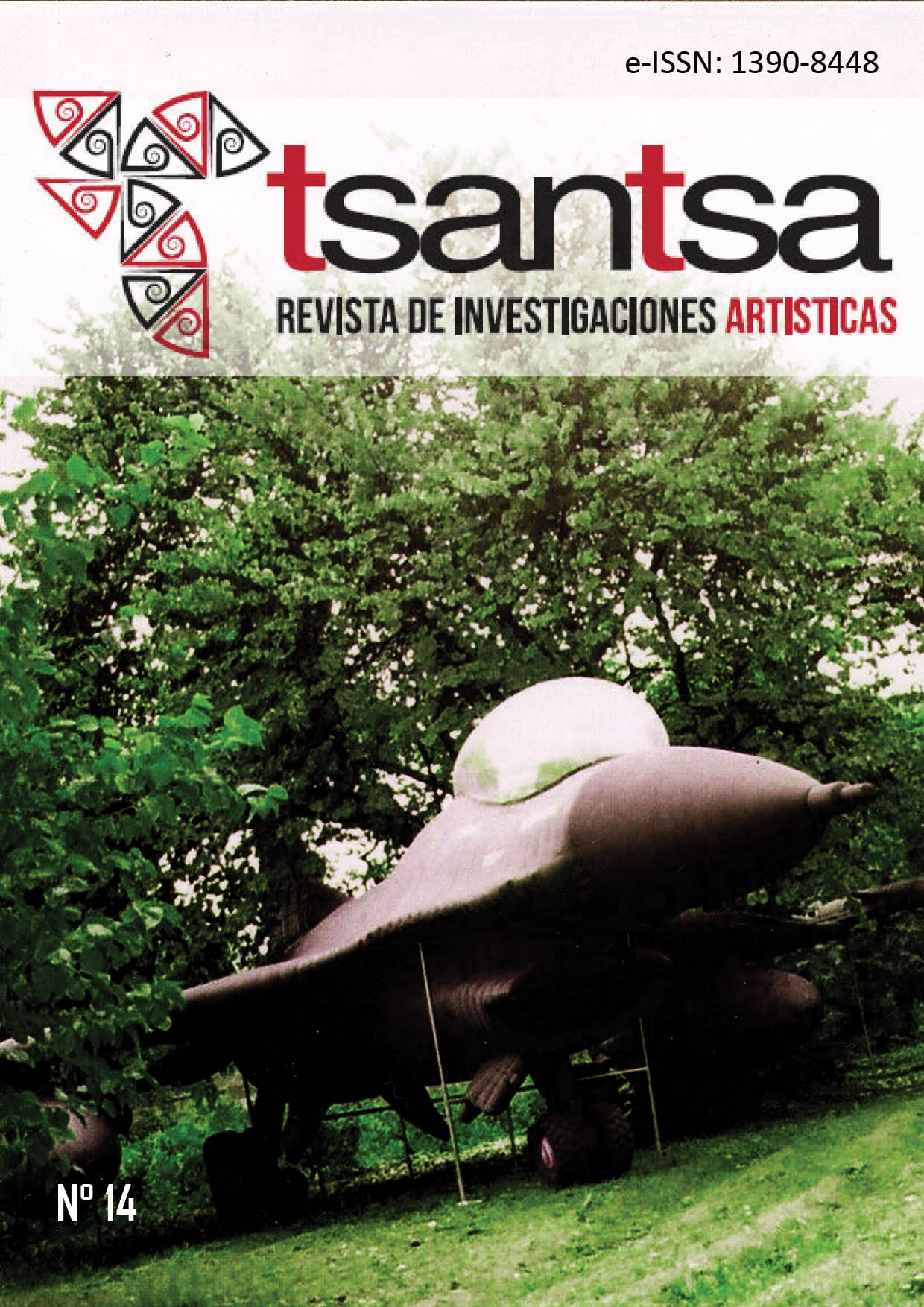Fluid sculptures: the artistic atmosphere around petrifying waters
DOI:
https://doi.org/10.18537/tria.14.01.14Abstract
Geothermal activity has generated, in various places on the planet, peculiar landscapes often endowed with a polyvalent value (identity element, economic resource, religious symbol, landamark, etc.) often recognised by the local community and tourism. In this article we focus on the phenomenon of petrifying waters (of thermal, fresh and groundwater origin) that have the power to create new geological landscapes even within a few years. Seven case studies, between Italy (Tuscany) and Spain (Tenerife), have been analysed from the aesthetic perspective. The aim is to demonstrate how these petrified landscapes can also be interpreted as pure art forms. In order to do this, the case studies were related to two lines of thought: Gernot Böhme's atmospheric aesthetics and Eugenio Turri's landscape as theatre. The results show a strong affinity between the concept of beauty and petrified landscapes, especially in terms of their theatrical nature.
KEYWORDS: Petrifying waters, Travertine, Landscape aesthetics, Natural monument, Landmark.
Downloads
References
Alonso-Zarza A.M., Casillas, R. y Rodríguez-Berriguete, Á. (2021). Landscape modification due to agricultural irrigation: Carbonate tufa formation on Tenerife, Canary Islands, Spain. Anthropocene, 34 (100285), pp.1-13.
Assunto, R., (1995) Il paesaggio e l’estetica. Milan: Novecento.
Böhme, G. (1993) Atmosphere as a Fundamental Concept of a New Aesthetics. Thesis Eleven, 36, p. 113-126.
Böhme, G. (2010) Atmosfere, estati messe in scena. L’estetica come teoria generale della percezione. Milan: Christian Marinotti.
Brogi, A., Capezzuoli, E., Karabacak V., Alcicek M.C. y Luo, L. (2021). Fissure Ridges: A Reappraisal of Faulting and Travertine Deposition (Travitonics). Geosciences, 11, 278. https://doi.org/10.3390/geosciences11070278
Chelazzi, G. (2013). L’impronta originale. Storia naturale della colpa ecologica. Turín: Einaudi.
Corriero, E.C. (2014) Pensare la Natura. La Naturphilosophie di Schelling alla luce della sua filosofia positiva. Annuario, 30, pp.171-193
Cruz-García, T. (1958) El "misterio" y la "tragedia" del agua en Tenerife. Anuario de Estudios Atlánticos, 4, pp. 379-451.
D’Ascenzo, F. (2005). [Reseña de Il paesaggio ed il silenzio, E.Turri]. Investigaciones Geográficas, Boletín 57, ,pp.137-140
Dreon, R. (2009) Il radicamento naturale delle arti: John Dewey nel dibattito contemporaneo. Aisthesis, II,1, pp. 23-47
Furia, P. (2020) Note sull’esperienza estetica del mondo geografico, a partire da Luigi Russo lettore di Rosario Assunto. En: Di Stefano E., Tedesco S. (113) La storia dell’estetica. Ricordando Luigi Russo, Roma-Napoli, Aesthetica Edizioni, pp.157-167.
Gandin, A. (2013) Classificazione genetica, caratteri petrologici distintivi e valori isotopici correlati di calcari incrostanti deposti da acque scorrenti (Travertini - Calcareous Tufa - Speleotemi). En: Billi, A., De Filippis, L. Ubertini, L. (27). Acque e Travertini, Roma: Società Geologica Italiana, pp. 11-14.
Luo, L., Capezzuoli, E., Vaselli, O., Wen, H., Lazzaroni M., Lud Z., Meloni F. y Kele S. (2021). Factors governing travertine deposition in fluvial systems: The Bagni San Filippo (central Italy) case study. Sedimentary Geology, 426 (106023), pp.1-20.
Nugent, P. (2015) Colors of thermal pools at Yellowstone National Park. Applied Optics, 54 (4), pp. 128-139.
Orche-García, E., (2021) Precipitación de traveertinos por aguas petrificadoras en Hunacavelica (Perù). Un patrimonio geológico con historia. Revista de medioambiente minero y minería, 6 (2), pp. 23-40.
Puche, F., Segarra-Moragues J.G., Fos, S. (2019) Briofitos de las formaciones de tobas calcaréa en la comunitat valenciana (este de España). Boletín de la Sociedad Española de Briología, 50 (11), pp. 1-11.
Rigby, K. (2011). Gernot Böhme's ecological aesthetics of atmosphere. Ecocritical Theory: New European Approaches. University of Virginia Press, pp. 262-291.
Sánchez-Bonilla, M.I., Oropesa-Hernández, T., Pérez-Jiménez, M., Viña-Rodríguez F.V., Meier, C., Guitán-Garre, M.F., Pérez-Sánchez M.J. y Núñez-Pestano, J.R. (2019) Arte, entorno, sostenibilidad. Aprovechamiento de residuos líticos provenientes de aguas subterráneas carbonatadas. Revista Bellas Artes, 14, pp. 137-151.
Stoppa, F., (2014) Il vulcanesimo. La preistoria: l’origine del mito. Memorie descrittive della Carta Geologica d'Italia, 45, pp. 79-83.
Tedesco, S., (2000) L’estetica di Baumgarten. Palermo: Aesthetica Preprint.
Tosco, C. (2009) Il paesaggio storico. Le fonti ed i metodi di ricerca. Laterza & Figli Spa: Roma-Bari.
Turri, G. (1998) Il paesaggio come teatro. Marsilio Editori: Venezia.
Viña-Rodriguez, F.V., Pérez Jimenez, M. (2019) Las galerías de agua como patrimonio minero y cultural. Propuesta para utilización de la capacidad petrificadora de sus aguas. En: Lerma-García, J.L., Maldonado-Zamora, A., López-Menchero-Bendicho, V.M. (1) Simposio anual de Patrimonio Natural y Cultural ICOMOS España, Madrid, pp. 163-171.
Vouduris, K., Yapijakis C., Georgaki1 M.N, Angelakis A.N. (2023) Historical issues of hydrotherapy in thermal–mineral springs of the Hellenic world. Sustainable Water Resources Management, 9(1): 24 doi:10.1007/s40899-022-00802-1.
Zinelli, A. (2012) Il problema estetico del kitsch negli scritti di Gillo Dorfles. Itinera, 3, pp.307-325.
Downloads
Published
How to Cite
Issue
Section
License

This work is licensed under a Creative Commons Attribution-NonCommercial-ShareAlike 4.0 International License.



